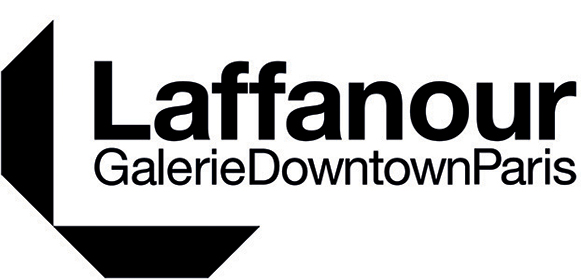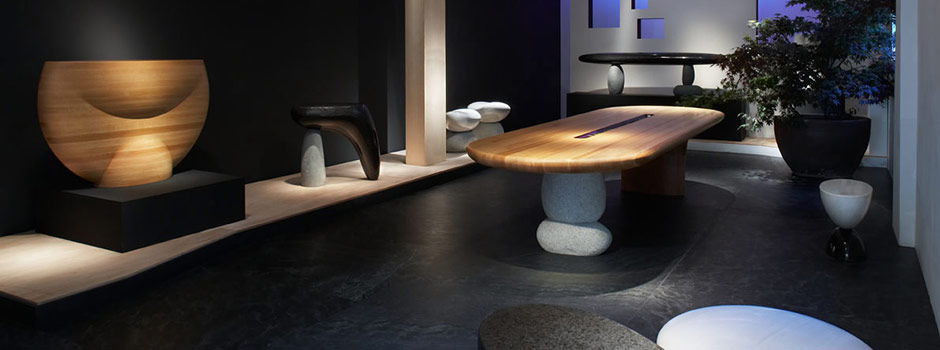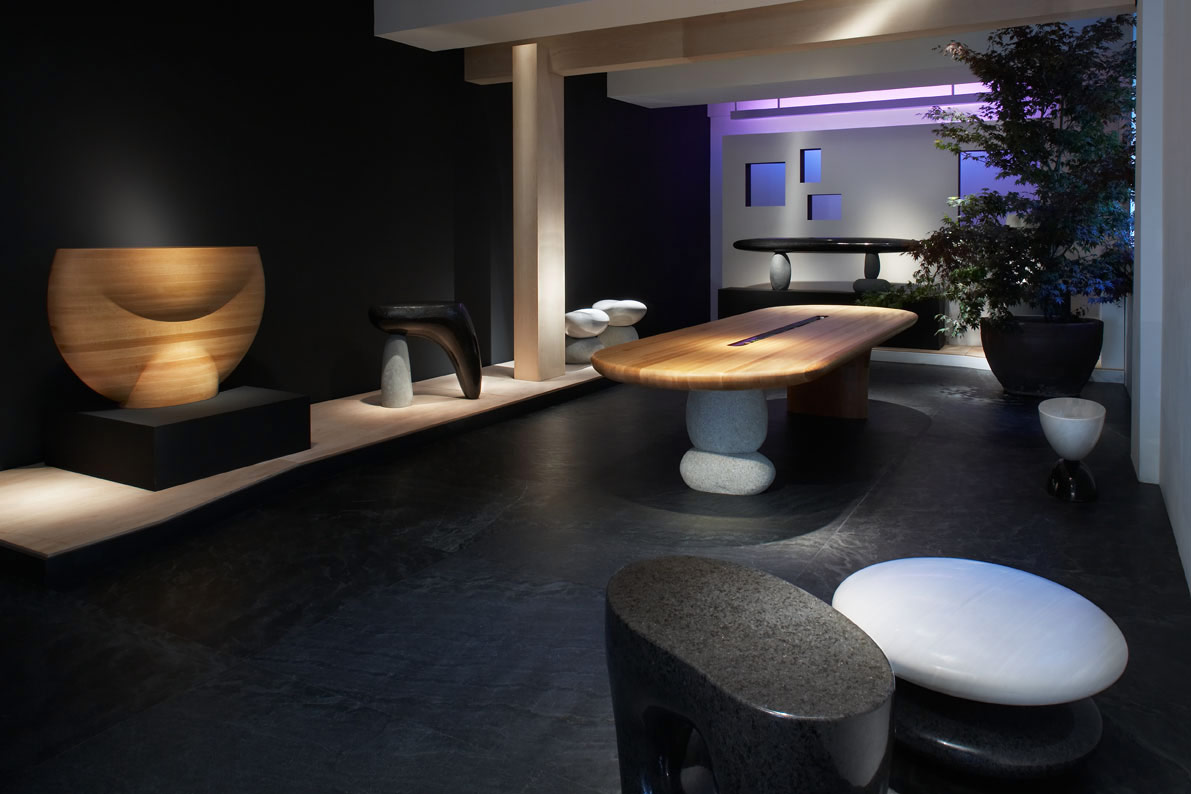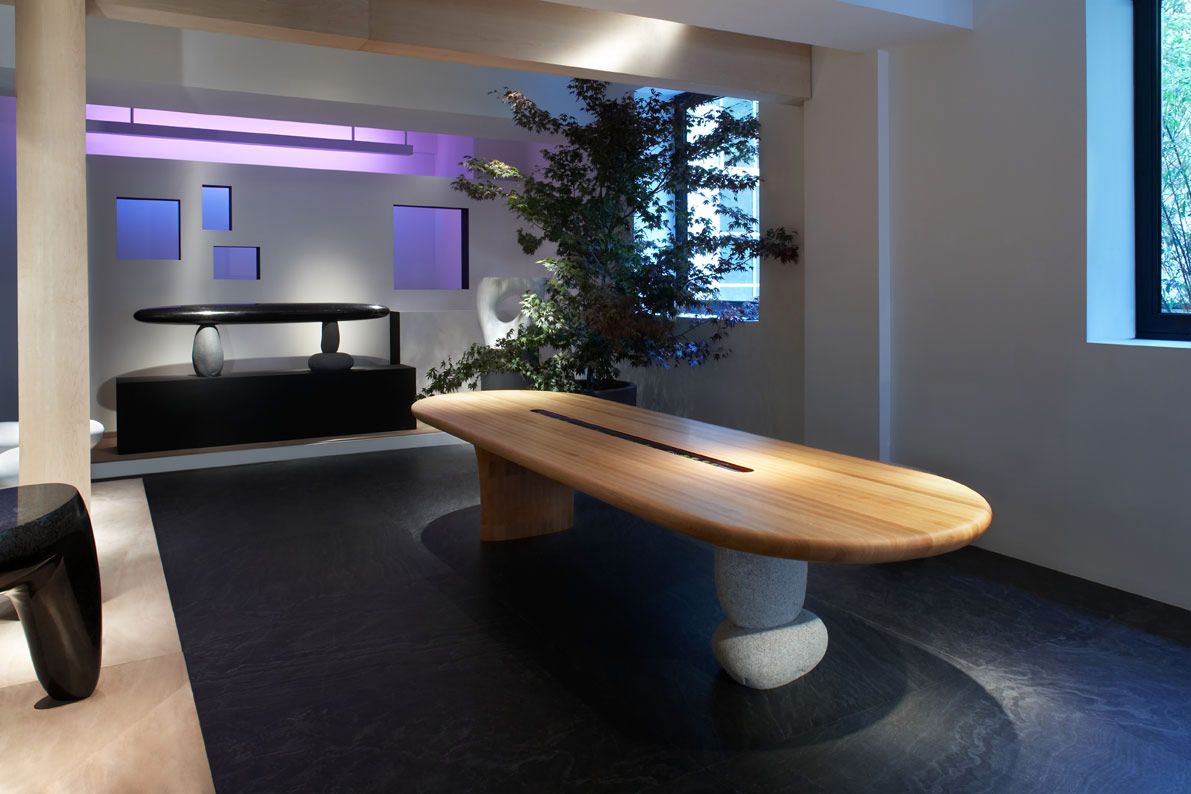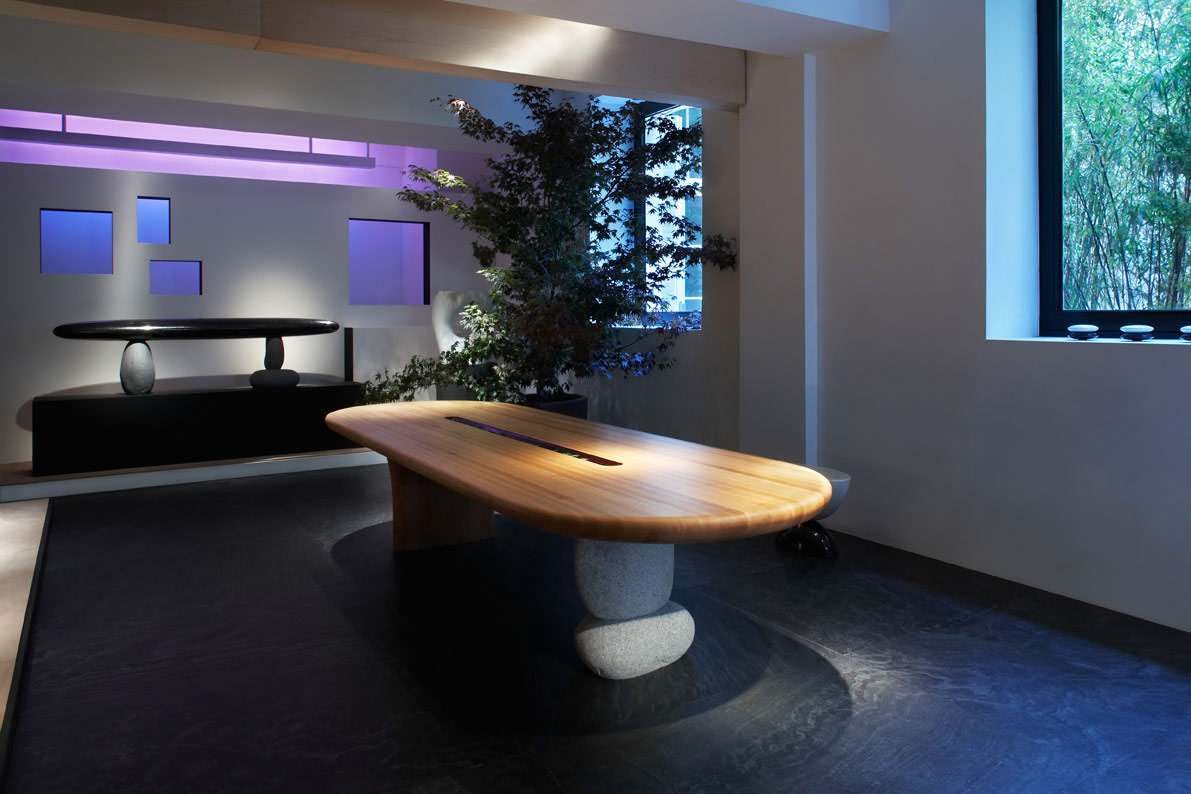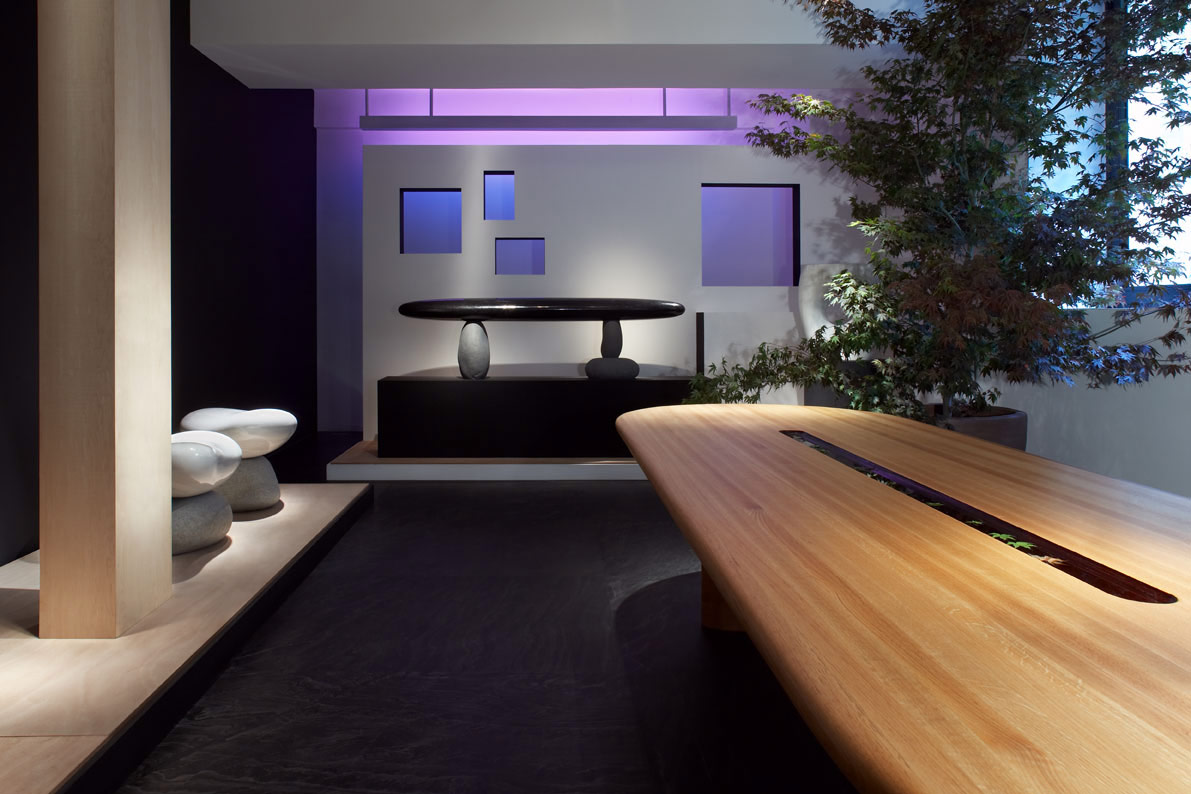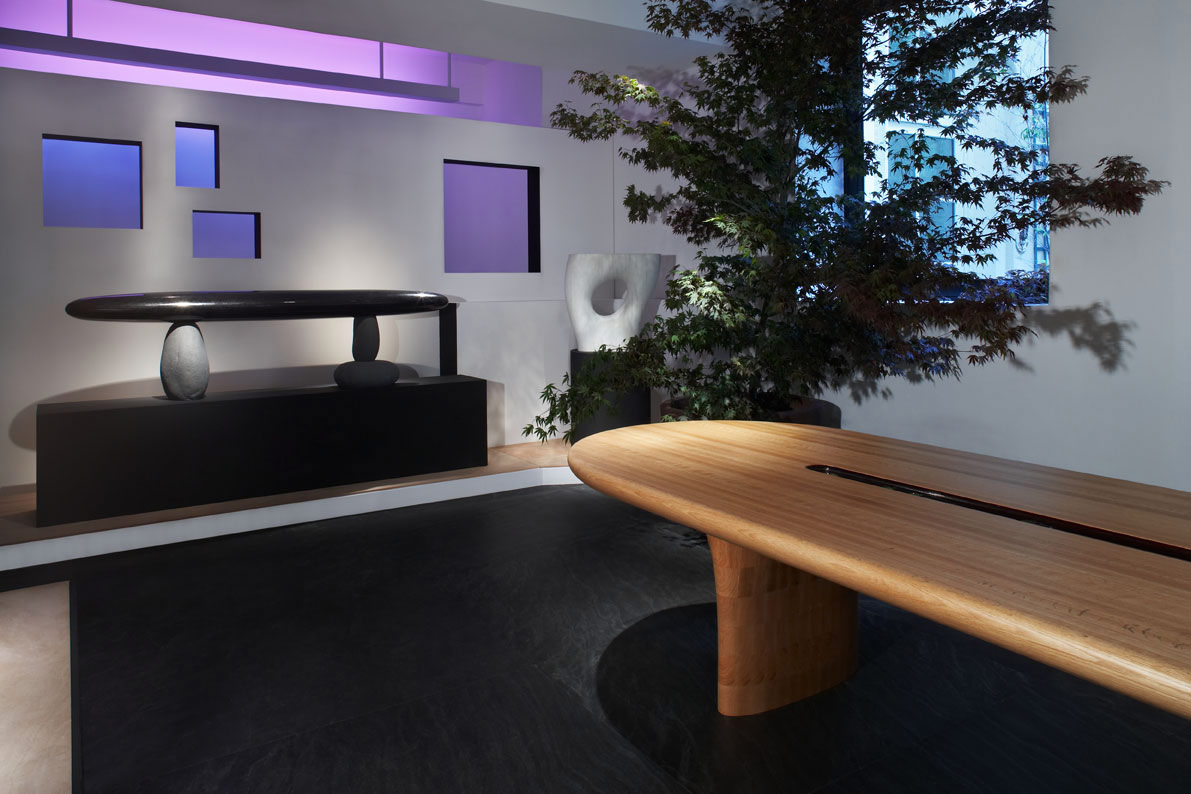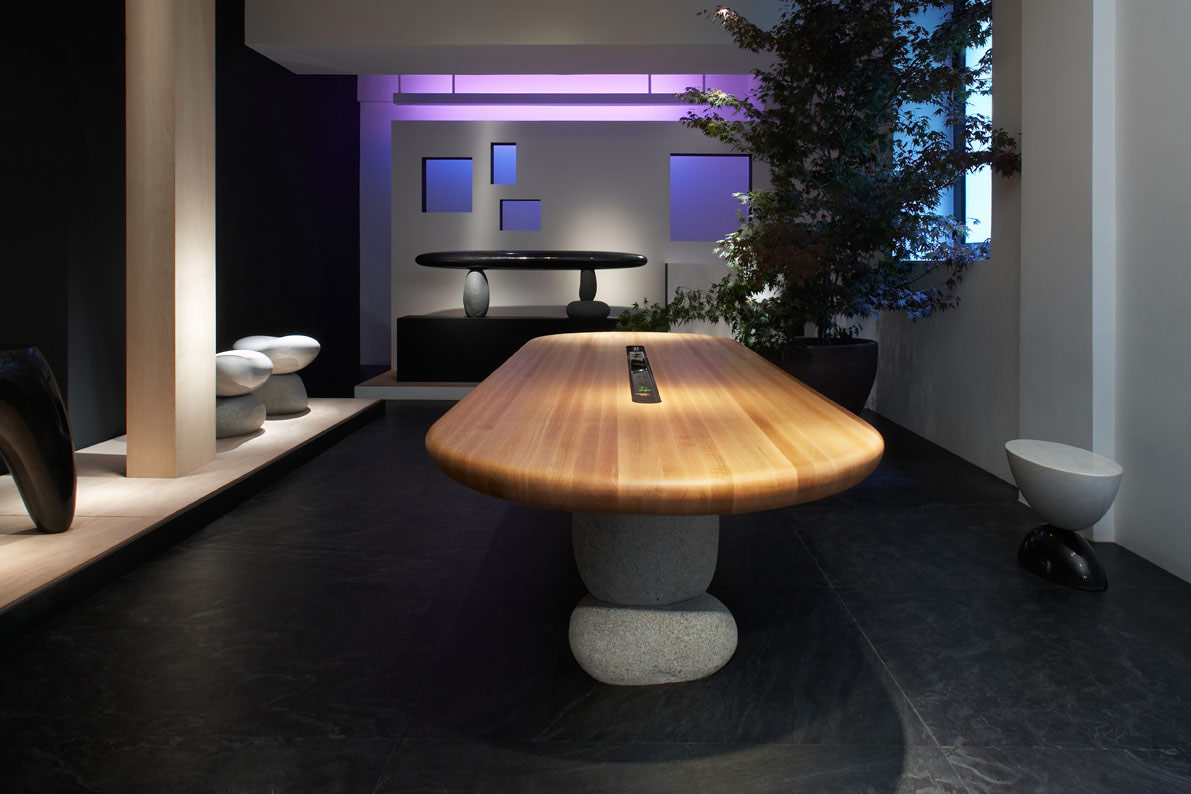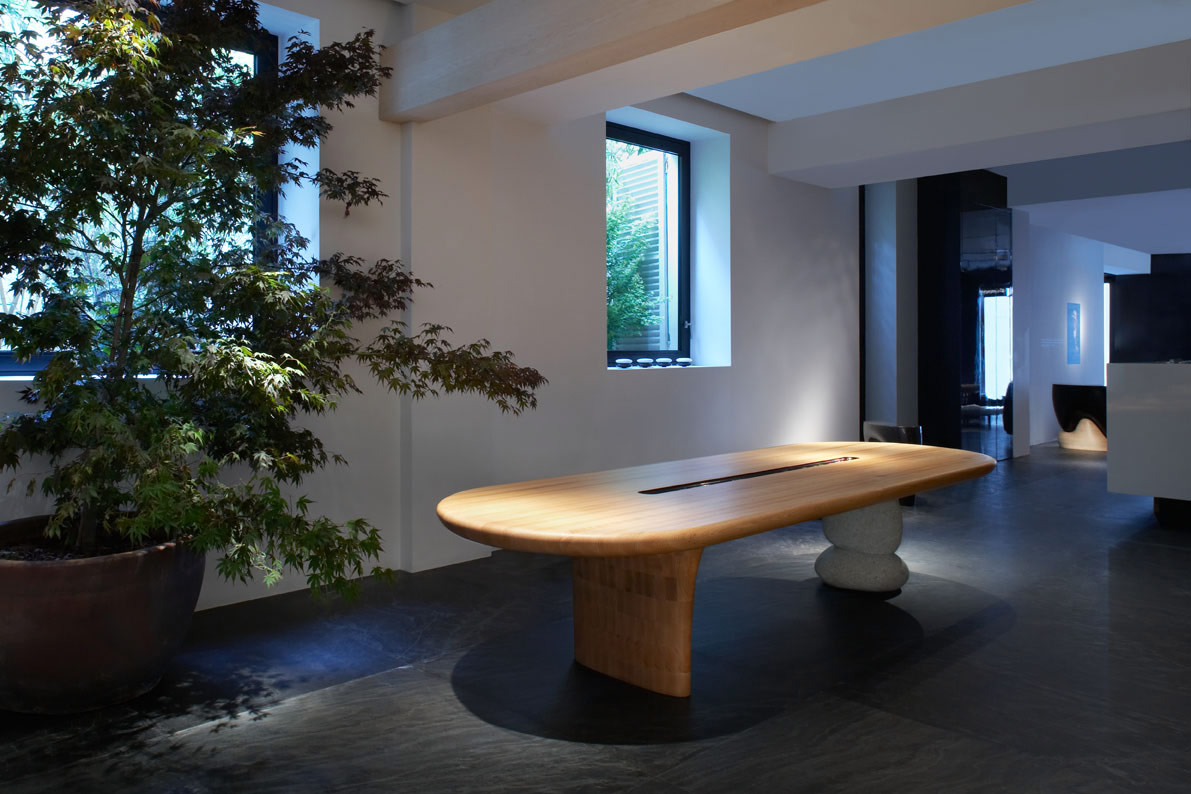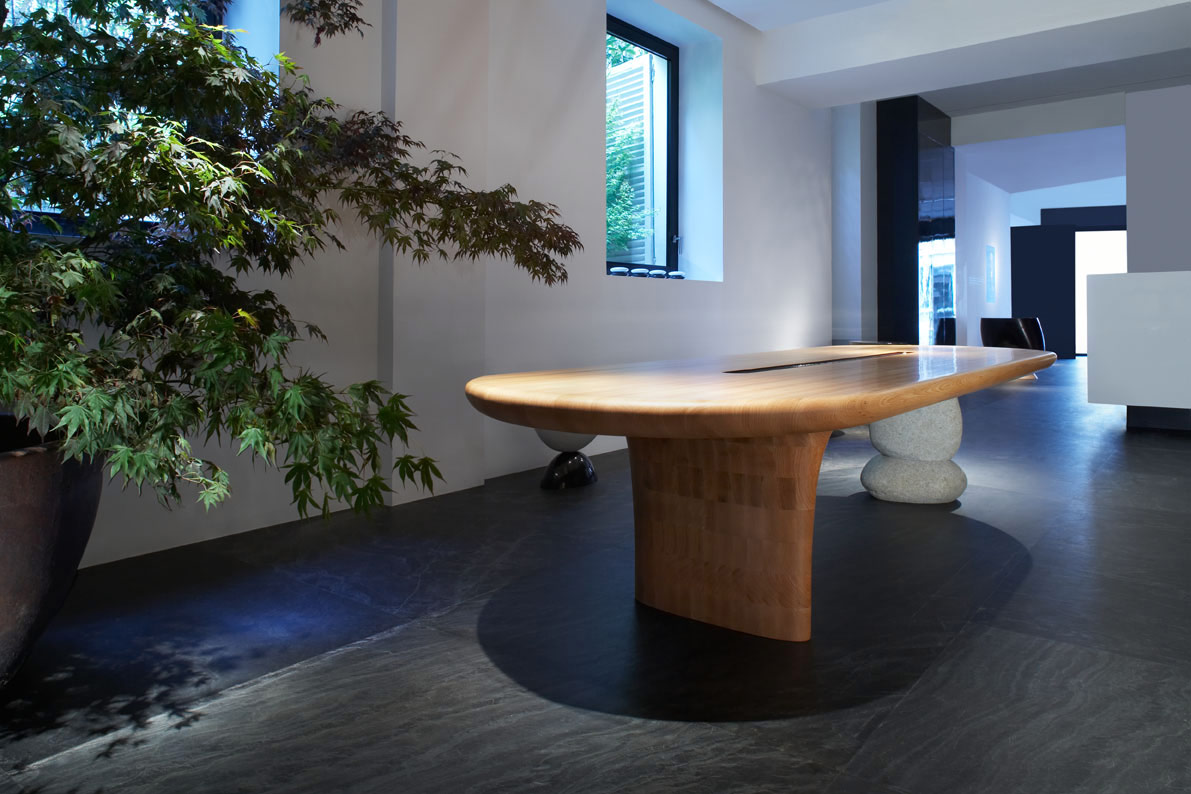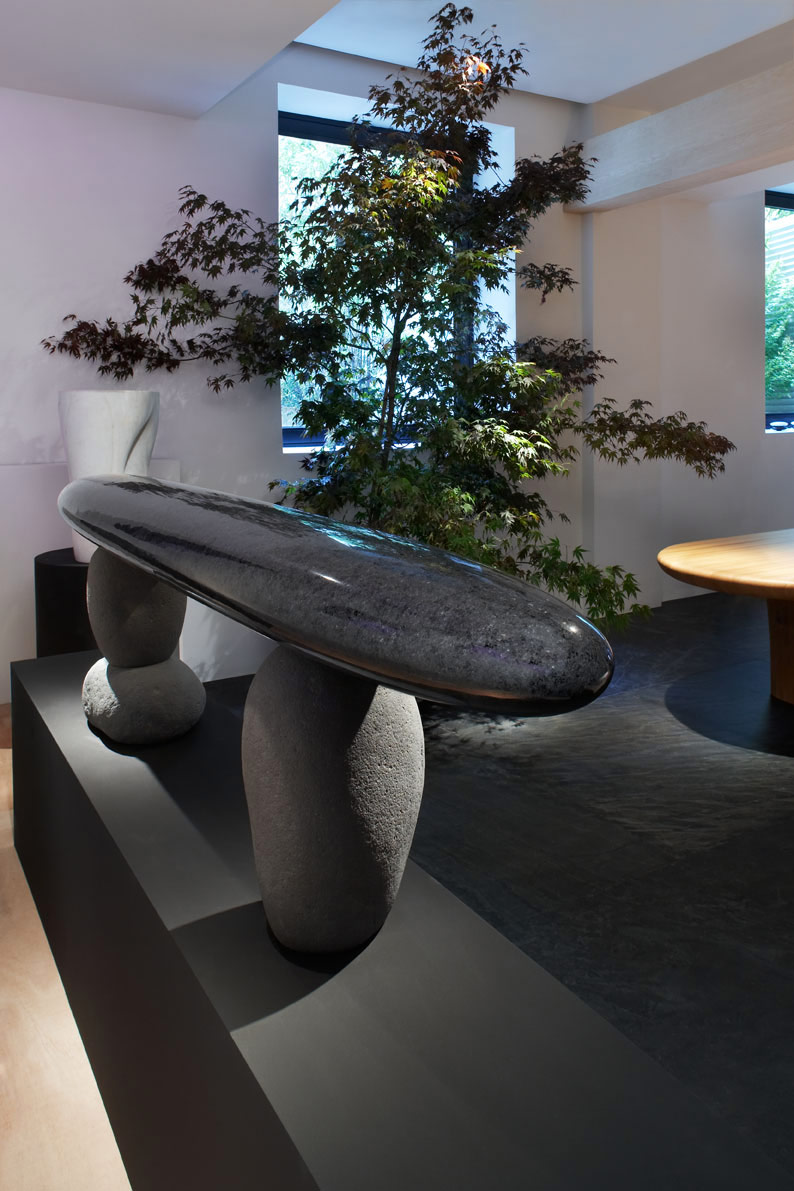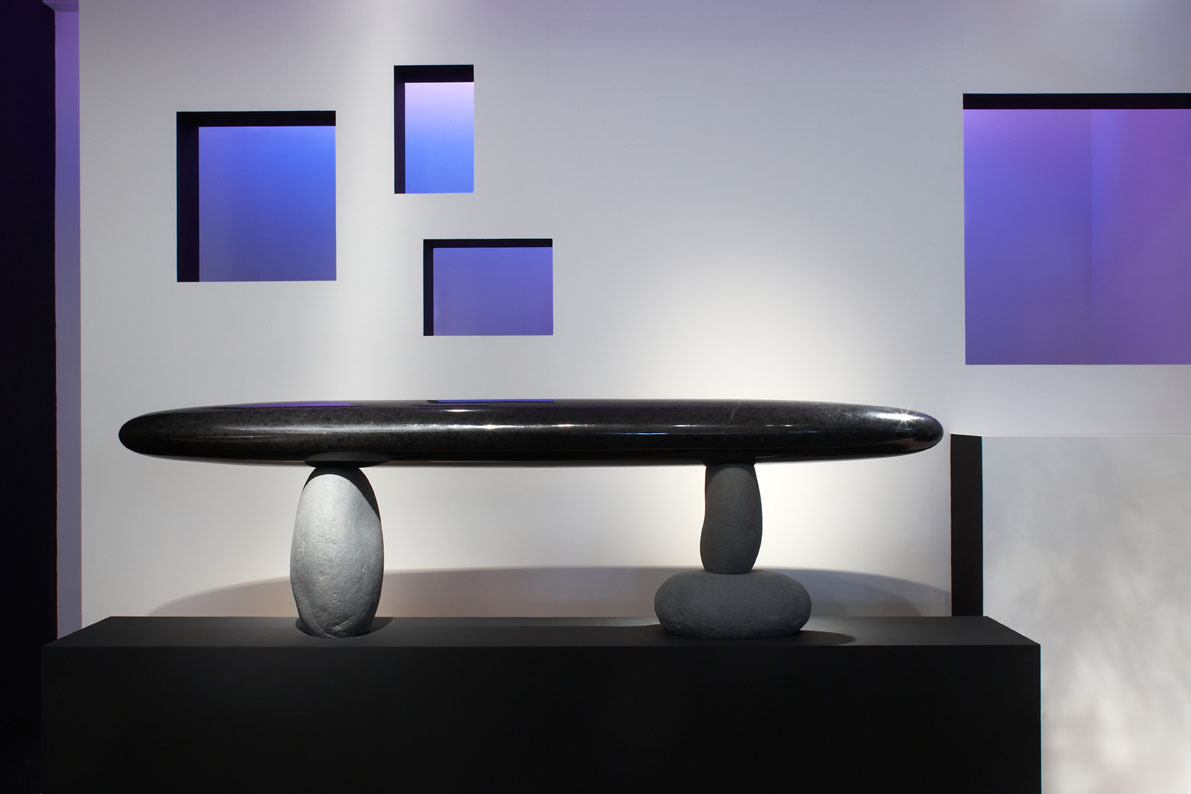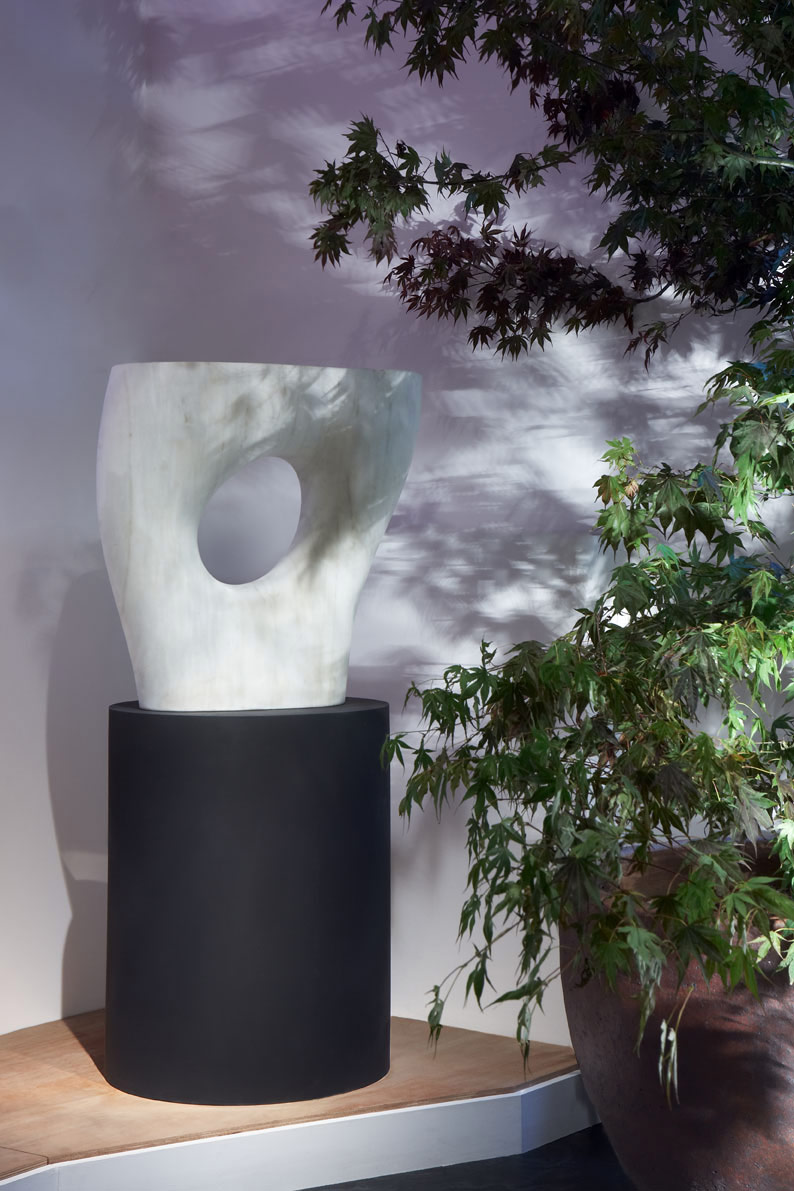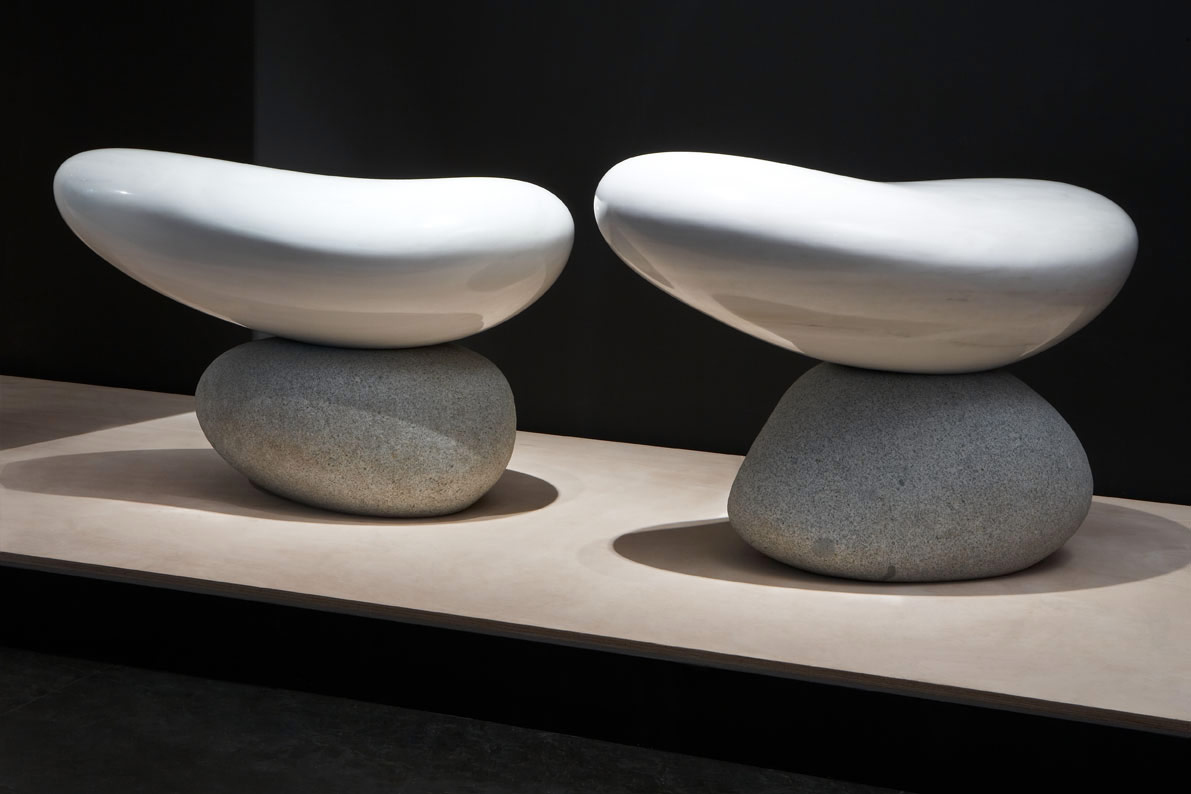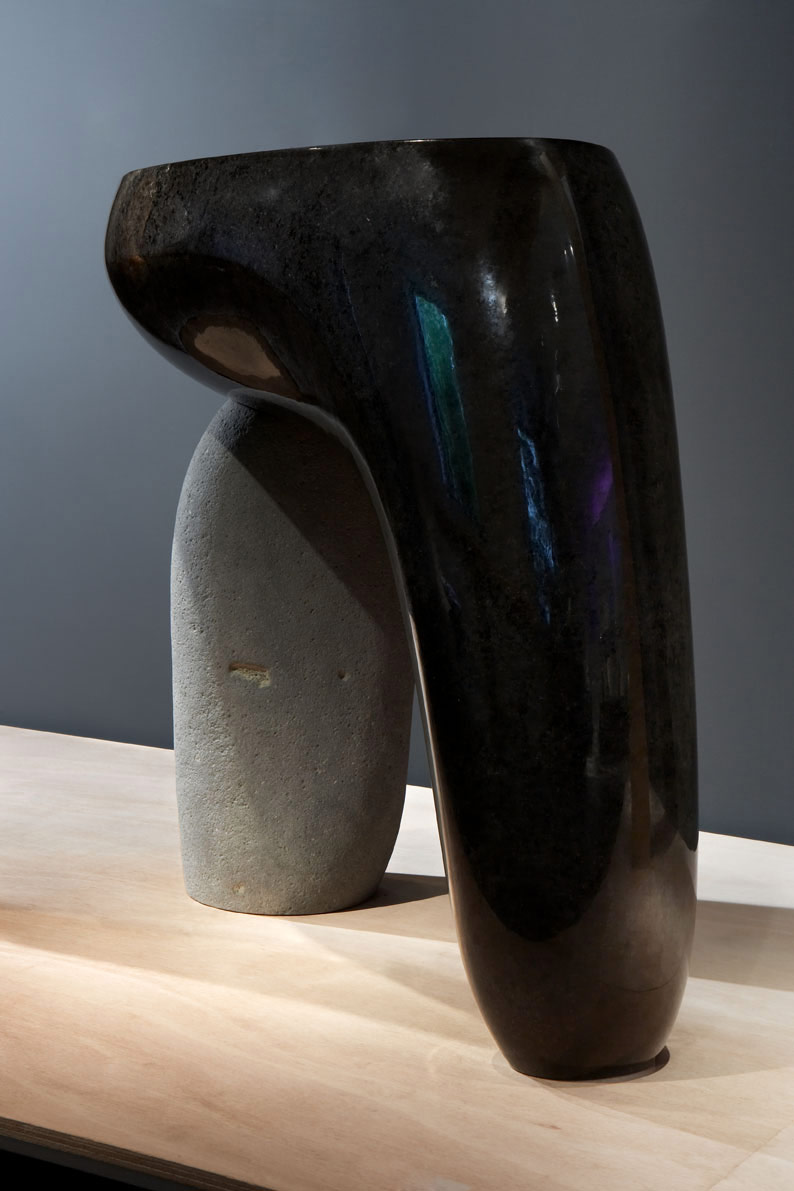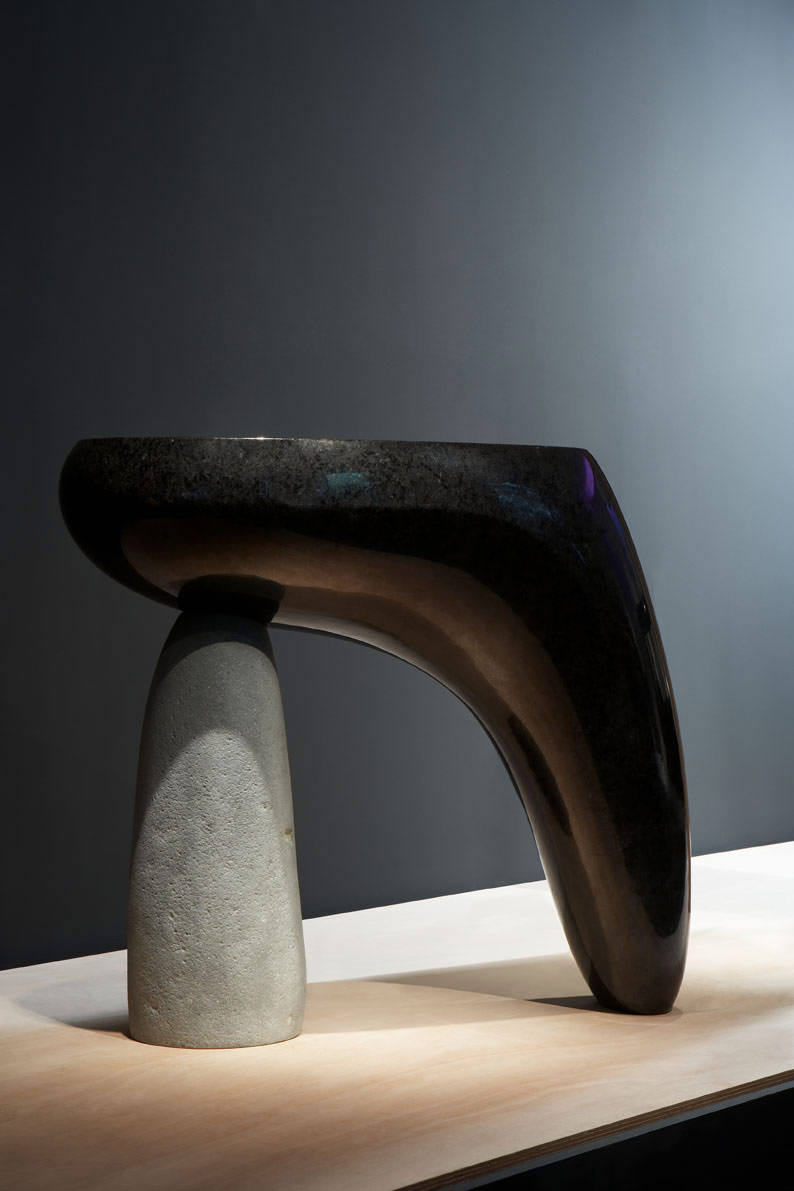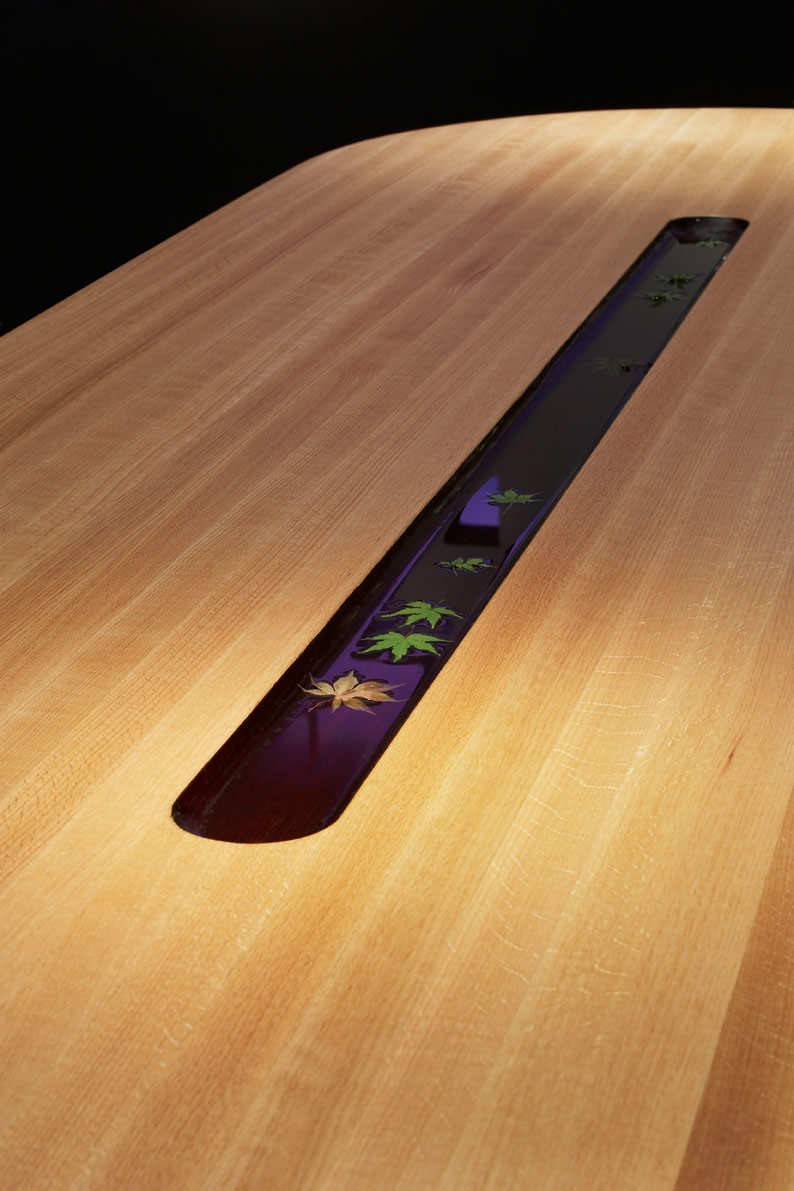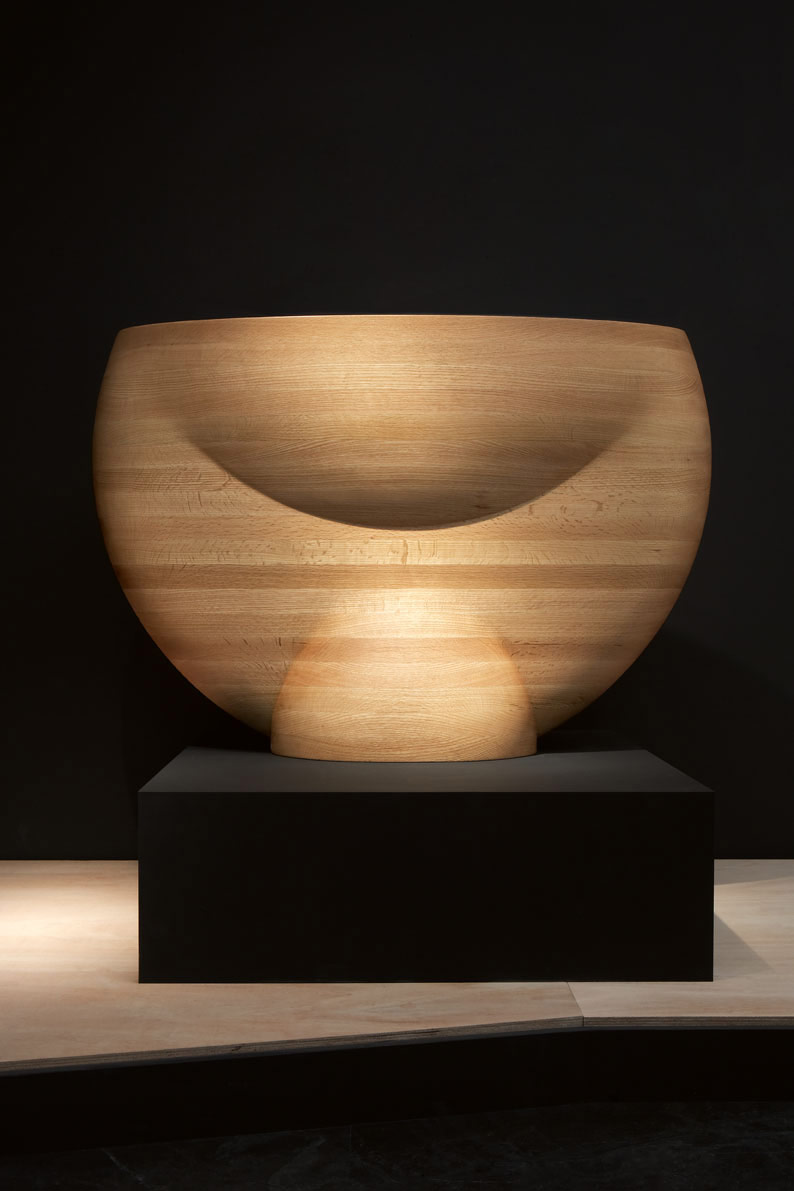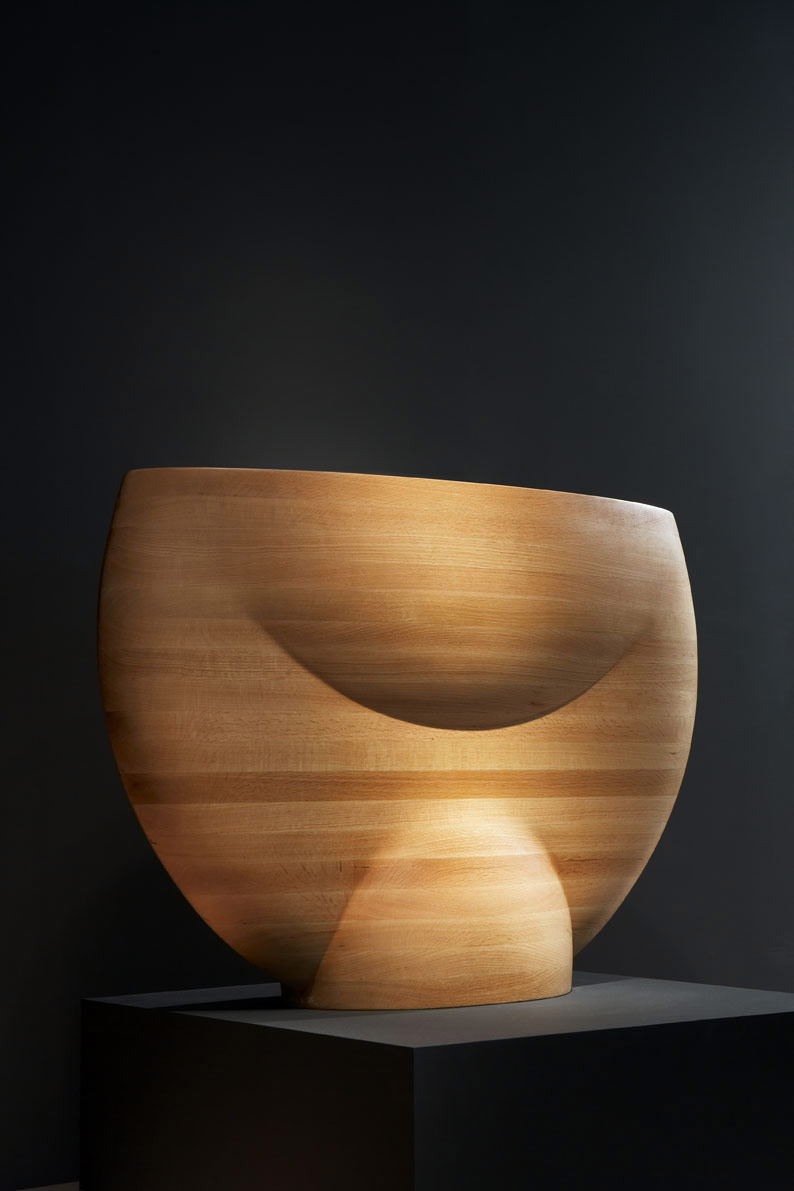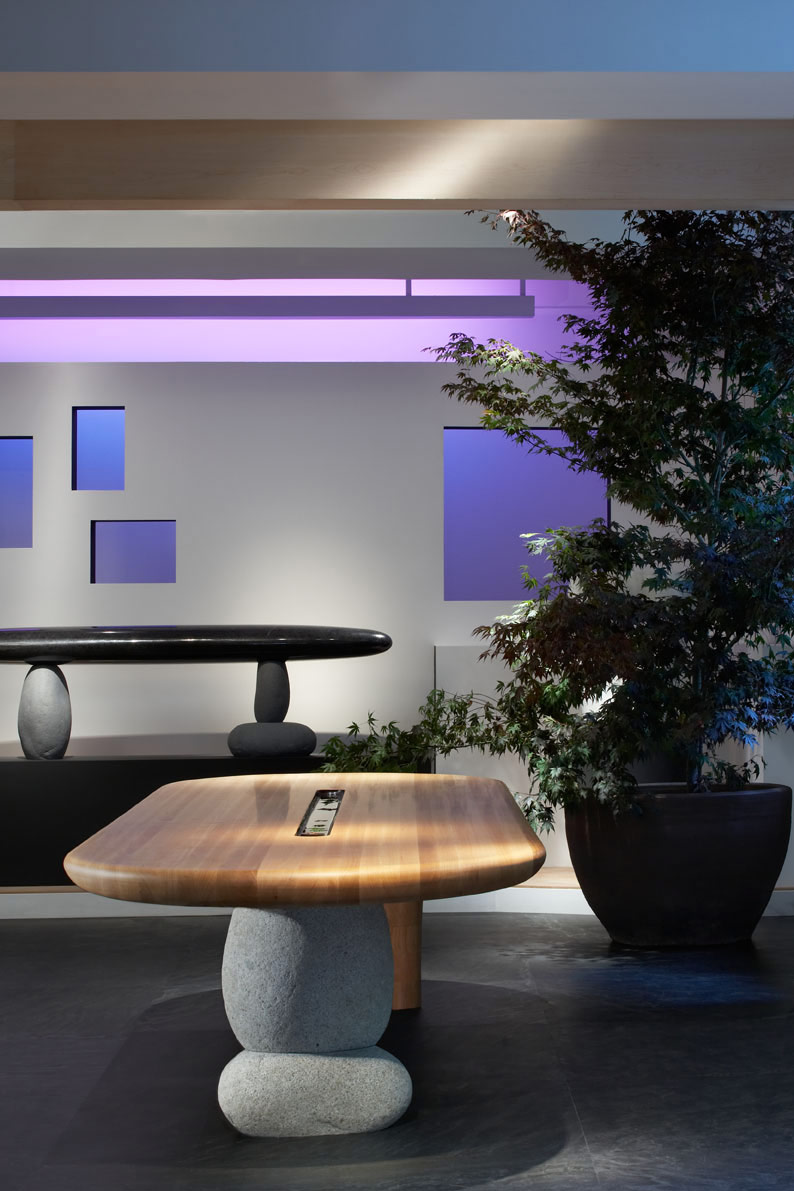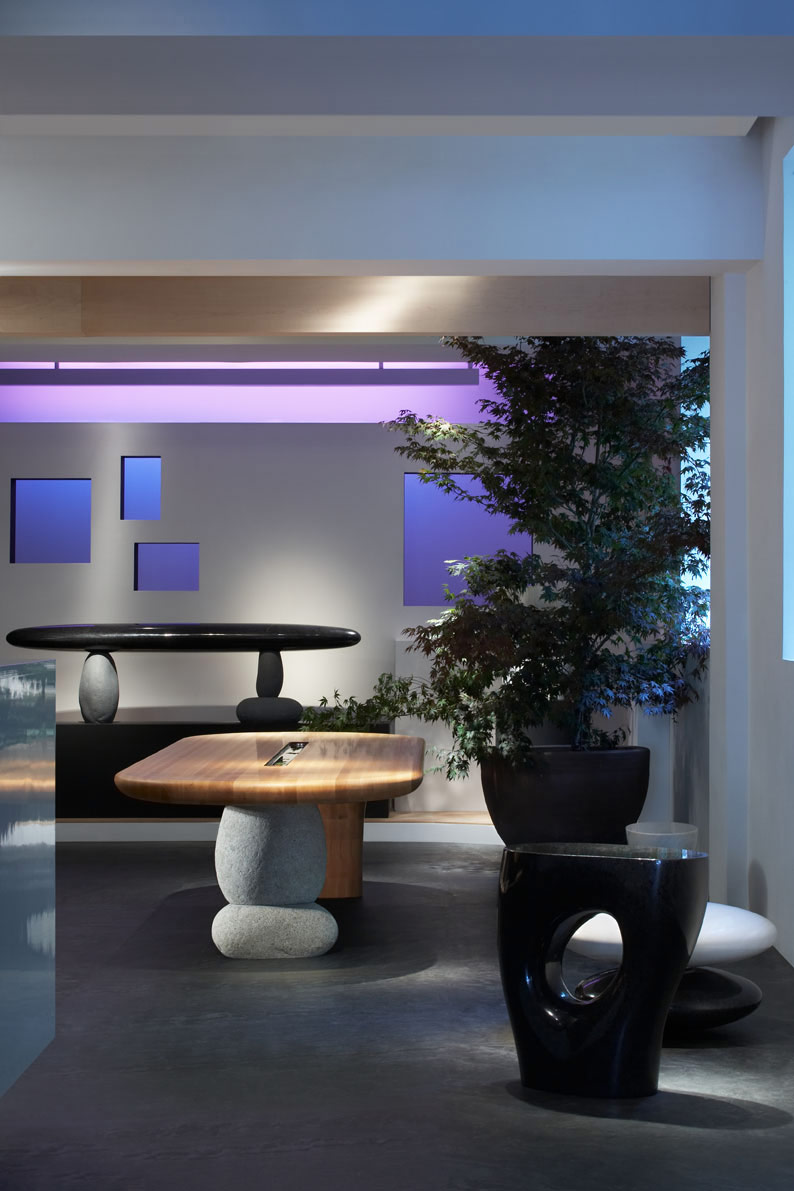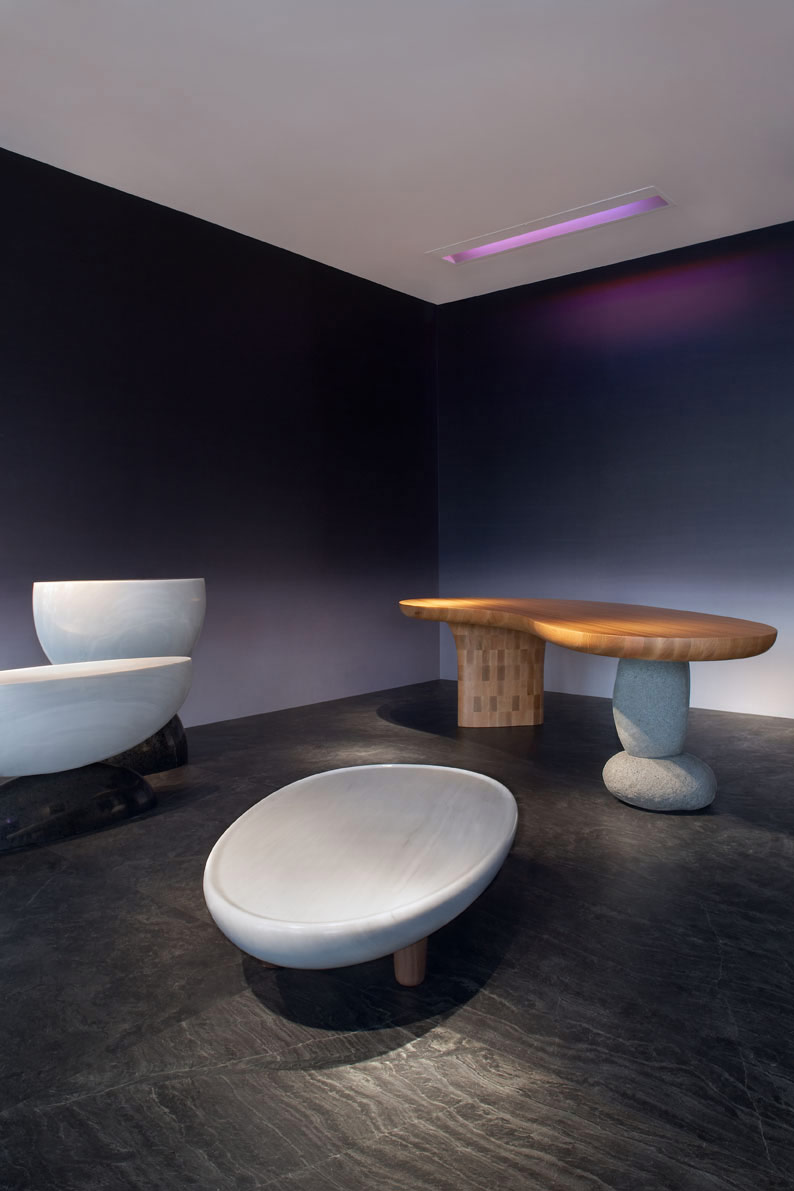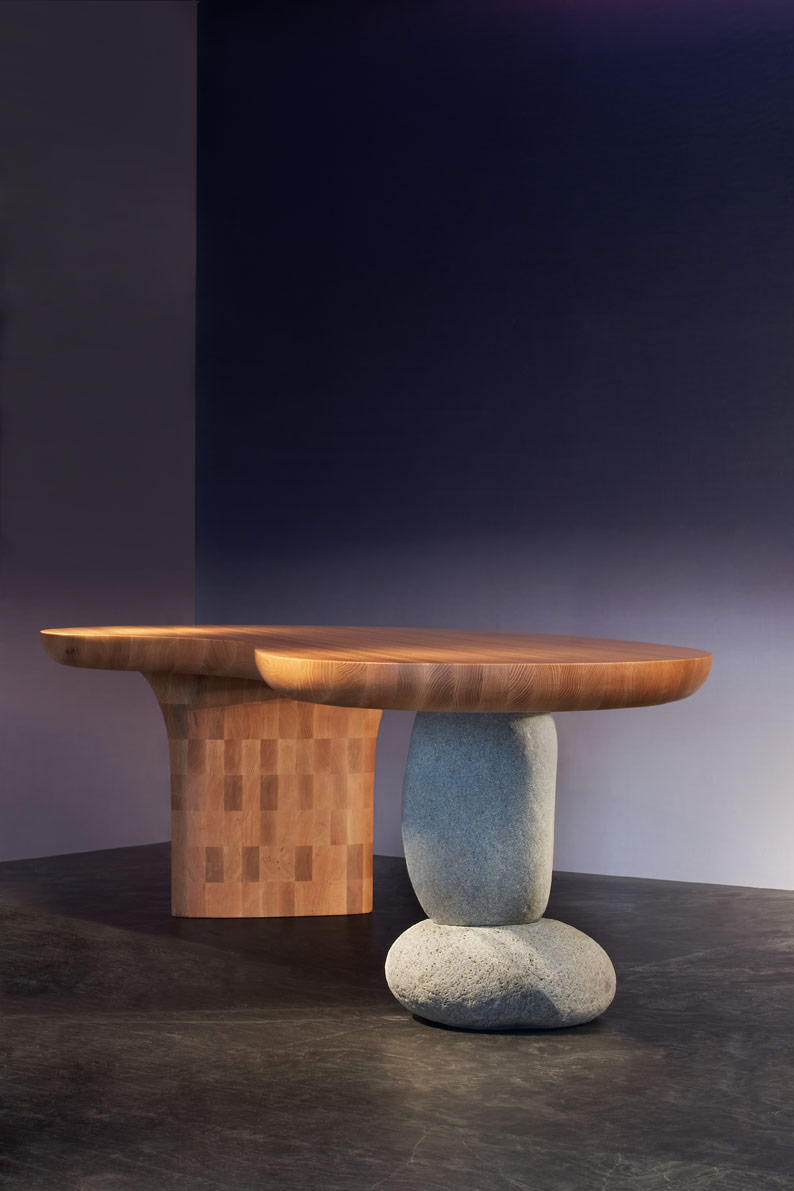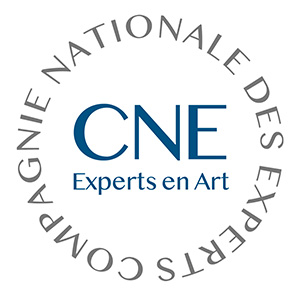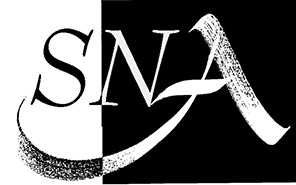The Downtown Gallery presents a large selection of works by the Korean designer Choi Byung Hoon and allows us to discover a contemporary work that takes on certain essential aspects of tradition in a renewed way.
Choi Byung Hoon is first and foremost a creator of forms. He is therefore first and foremost an artist. It so happens that he gives these forms the concrete aspect of a table, a bench, a console. This is why he is also a designer. The works he presents today at downtown gallery reveal in an admirable way the power and singularity of his work, but they also reveal something more secret and inaccessible to us Westerners, the essence of the Korean soul. Before being works of art and furniture, the objects presented by Choi Byung Hoon are manifestations of the Korean spiritual substratum, a rare and powerful mixture of Taoism, Zen, and attention and respect for what in nature comes to meet the highest expectations of the spirit.
To imagine that something like “the” nature would exist, we know, is a mistake. But to recognize that “nature” is the result of the projection of our desire for perfection onto what surrounds us, brings us closer to a living form of truth. The first step to take is undoubtedly to consider not only the tree or the leaf but also the river or the stone as living elements, as poles of manifestations of the spirit, as doubles of our deepest aspirations.
However, the power of a creative spirit like that of Choi Byung Hoon lies in the fact that he knows that the accomplishment of the work, the access to perfection and purity, requires the transformation of materials. The challenge of creation is to bring forth from stone, wood, water, the spiritual power that each one conceals. To do this, one must have recognized the existence of this force of the spirit in oneself, recognize it in the material and know how to make it emerge from the material in a form that speaks directly to the spirit of each person.
To approach an object created by Choi Byung Hoon is to feel the breath of matter that has become a spiritual force pass over you. However, it is not enough to know that the spirit is somehow also present in things to know how to share it. Choi Byung Hoon has a particular sensitivity for stone, marble and wood, but it is above all through the meeting and friendly confrontation of opposites, and even more so through their association, both constrained and inventive, that he reveals the spiritual dimension of each one. Thus when a long wooden tongue comes to rest in its race towards infinity on two stone pebbles placed perpendicularly to each other, it is all the subtlety of the difference and complementarity between construction, expressed here by its simplest paradigm, the association of two natural elements including a geometrical thought, and growth, expressed by the material closest to man, wood, but a wood worked and polished, that he succeeds in making us share.
When he places an oblong shape in polished marble on three pebbles that seem to stand only to face the contrary forces of life, it is the most ancient gestures, the first gestures of man in his constructive passion that he resurrects before us. This is why in front of such “objects” we are at the same time projected in the contemporary extreme and in the archaic extreme. This bending of time through purified and spiritualized materials is what Choi Byung Hoon makes us not only see but experience.
The object thus created reaches in us by its functional aspect a wider psychic zone than that touched by the only work of art. Indeed, we know that we can use this table, this console or sit on this bench of marble and stone. But do we do it, it is inevitably with the exacerbated conscience of this curvature, with the exact conscience of the immensity that separates us and connects us to an immemorial past and to a future that stretches out to us. To sit on a bench created by Choï Byung Hoon is to apprehend a future in which the purity and simplicity of forms constitute more than a message, a source of light that allows us to move forward into the night without fear of getting lost. It is also to understand that we are the vectors without which this memory and this light could not exist. The soul of Korea lies in its particular power to link these worlds that precede memory and these shadows that haunt the future, by means of elements that intimately combine the spirit of nature and the plastic sensibility of culture, and to combine in a single whole the demands of serenity with the vivacious impulses of life. The work of Choi Byung Hoon is one of the purest incarnations of this.
